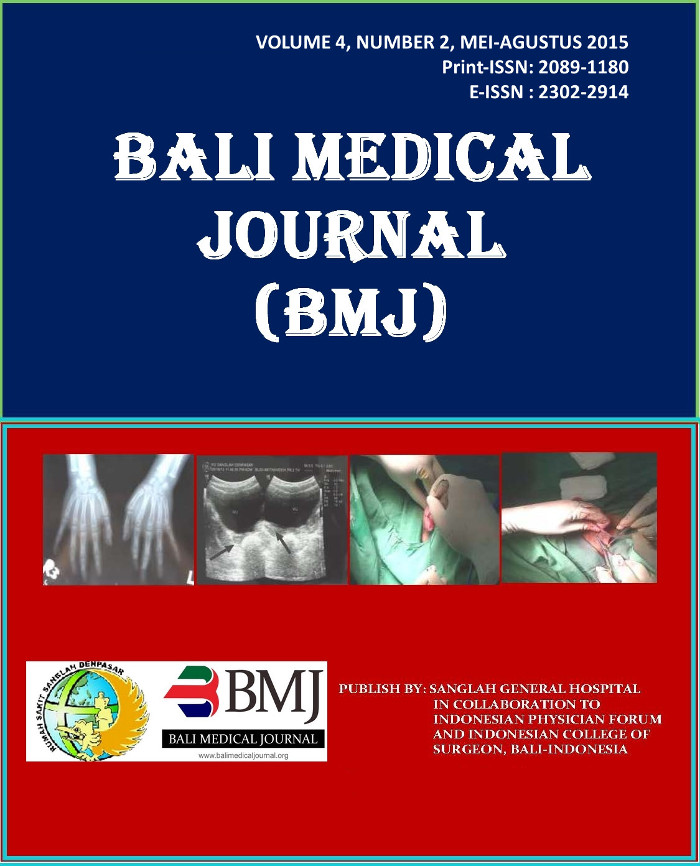ROLE OF MELATONIN IN EXPRESSION OF MALONDIALDEHYDE ON MICROGLIA CELLS OF RAT INDUCED HEAD INJURY
Abstract
Background: brain injury is condition that harm human life. This study examines the application of melatonin in reducing oxidant status and barriers to the formation of cerebral edema in a rat brain injury model. The main purpose of this study is to prove the role of melatonin on the expression of Malondialdehyde (MDA) and histological injury in a rat head injury model. Methods: This study was a randomized experimental posttest only control group design. This experimental was carried out on male Sprague Dawley strain Rattus novergicus, aged of 10-12 weeks, and weight of 300 g. Rat brain injury model was performed based on Marmarou (1994).1 Histology were observed using hematoxilen-eosin staining and immunohistochemistry, MDA was assessed using antibodies specific to each MDA protein. Observation and calculation of immunohistochemistry studies were also performed. Results: In this study, histological observation area covers an area of bleeding, number of immune-competent cells and the diameter of the arteries. Histology observation results showed that there is a significant reduction in diameter of arterial blood vessels of the brain injury tissue. Immunohisto-chemistry results showed that there is a significant reduction of MDA expression amount microglia cells of brain injury tissue. Conclusion: From this study, it can be concluded that Melatonin is a potent hydrogen peroxide scavenger that reduce the production of MDA.Downloads
Download data is not yet available.
Published
2015-08-28
How to Cite
NASUTION, Khairul Iksan.
ROLE OF MELATONIN IN EXPRESSION OF MALONDIALDEHYDE ON MICROGLIA CELLS OF RAT INDUCED HEAD INJURY.
BALI MEDICAL JOURNAL, [S.l.], v. 4, n. 2, aug. 2015.
ISSN 2302-2914.
Available at: <https://ojs.unud.ac.id/index.php/bmj/article/view/21708>. Date accessed: 25 nov. 2025.
Issue
Section
Articles
Keywords
human; life; staining; scavenger


